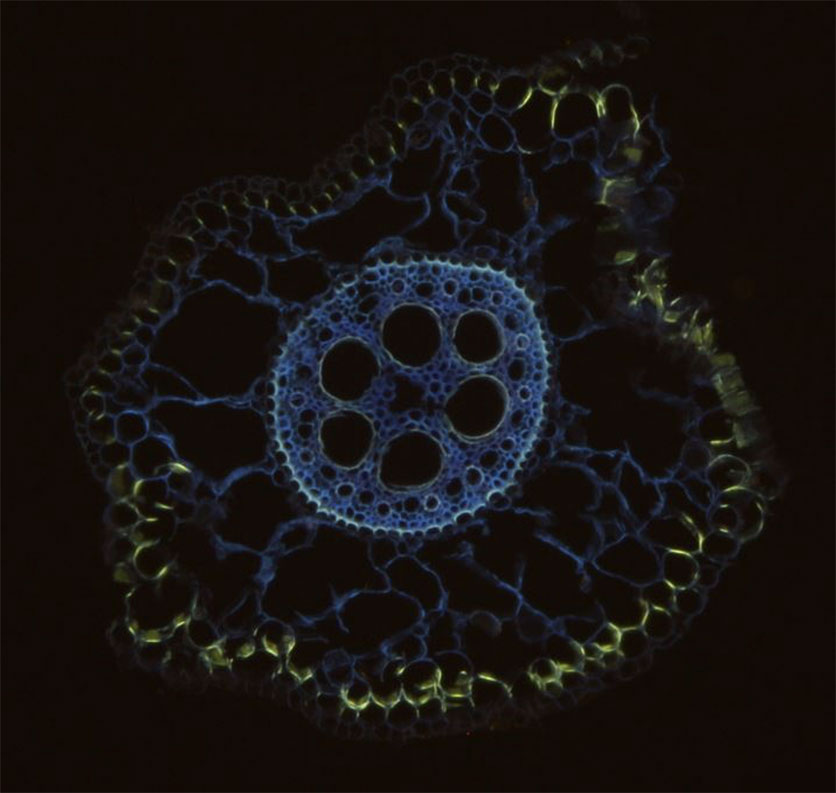Research
In her PhD research project, Tingting Liu investigates the molecular genetic mechanisms and physiological responses of root apoplastic barriers (including Casparian bands and suberin lamellae) to P and K deficiency in soil-grown maize roots.
Roots play a main role in the nutrient and water uptake from surrounding soil. The nutrients are transported into the root central cylinder through three radial pathways: the apoplastic, the symplastic, and the coupled transcellular pathway. Both Casparian bands and Suberin lamellae act as apoplastic root barriers in the endo- and exodermis in plant roots. The increase of suberization of roots in response to abiotic stresses provides a: (i) barrier to prevent uncontrolled passive water loss during water deficit, (ii) barrier impeding toxic ions during salinity, or (iii) barrier against radial oxygen loss in roots under hypoxia conditions has been extensively shown in the past. However, the effect of mineral nutrient supply on root barrier development and its physiological effects are not completely understood.
Such cell wall modification in roots occurs during cell differentiation that includes different development stages from the formation of Casparian bands, formation of suberin lamellae, and secondary cell wall deposition, corresponding to different root zones. Here, Tingting Liu’s focus is on the development of apoplastic barriers under P deficiency and K deficiency and their effect on nutrient and water transport.
During her pre-test, the development of apoplastic barriers was observed through microscopic staining. Nutrient content in maize and soil before planting and after harvest were measured and compared. For future experiments, she will continue to study the effect of K deficiency on apoplastic barriers. Gas chromatography will be used to do further composition analysis of apoplastic barriers. Transcriptomic analyses will be carried out to understand the genetic mechanisms.











